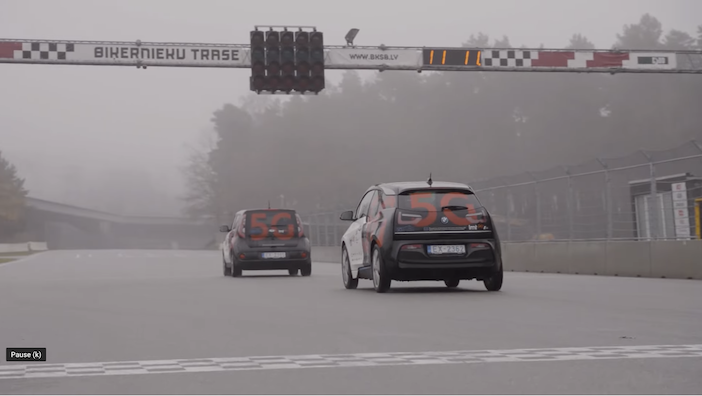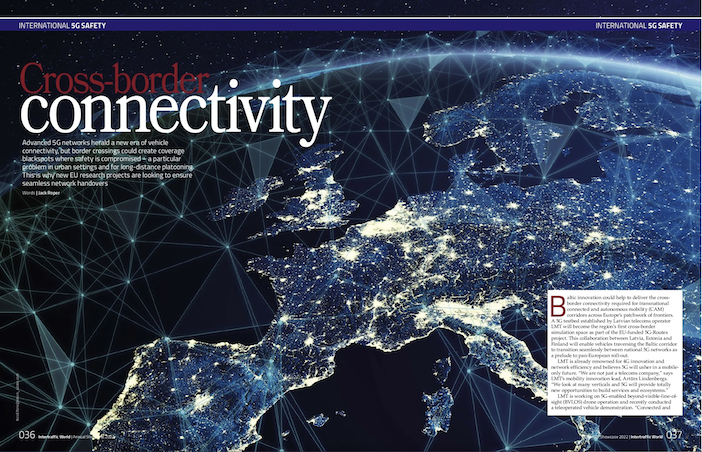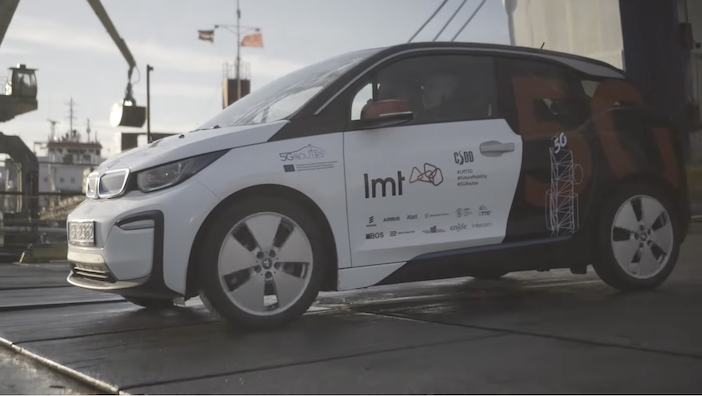The first V2X use-case demonstrations – including truck platooning and VRU collision avoidance – have been completed using a 5G mobile network that imitates the challenges of cross-border connectivity, on a race track in Latvia
The 5G-Routes project – reported on in the 2022 edition of Intertraffic World magazine – is taking place on a mobility testbed at the Bikernieki race track in Riga, Latvia, and will be crucial for enabling vehicle connectivity in Europe using cellular networks – a continent of many borders and mobile operators. Four cross-border use cases were demonstrated in total by several 5G-Routes project partners.
The Latvian Institute of Electronics and Computer Science showcased dynamic vehicles platooning – a scenario in which an autonomous vehicle copies the maneuvers performed by a manually controlled vehicle, using only vehicle data sent and received over a commercial 5G network.
The Vedecom Institute for the Energy Transition and Tallinn University of Technology (TTU) tested two interconnected use cases – a vulnerable road user (VRU) collision avoidance and connected maintenance.
In the VRU demo, a pedestrian received alerts from a connected electric vehicle warning the pedestrian of a potential collision and providing crucial seconds to remove themselves from danger. The VRU and the electric vehicle were each connected to a different mobile operator, testing the cross-border connectivity.
The fourth cross-border connectivity use case demonstrated multiuser gaming on the go hosted by Brainstorm. It showcased the 5G non-standalone (NSA) network capabilities by testing multiplayer gameplay with gamers connected via a 5G-enabled smartphone and laptop.

Latvia’s cross-border 5G mobility space was launched as a part of the 5G-Routes project – an EU-funded future mobility initiative to develop innovative and commercially exploitable CAM (connected and automated mobility) use cases and ensure cross-border automated mobility. The testbed has been developed by the Latvian mobile innovator LMT, in close collaboration with Estonia’s Telia.
When implementing CAM in a cross-border environment, the main challenge is ensuring seamless connectivity. Cross-border connectivity in Europe has been addressed by several EU-funded projects, including 5G-MOBIX, which focuses on developing 5G use cases in transportation, emphasizing cross-border functionality.

“The biggest challenge in testing innovations over the 5G network in a cross-border setting is finding a safe environment that enables undisturbed testing in realistic conditions. Thus, a closed and safe cross-border testing space significantly alleviates this hurdle, facilitating testing on a wider scale and massively accelerating the development of innovative cross-border solutions in all industries, including smart mobility,” says Artūrs Lindenbergs, Mobility Innovation Lead at LMT.
The 5G-Routes project, with a consortium made up of 21 partners from 9 European countries, began work on September 1, 2020. Since then, it has demonstrated several use cases and worked on providing the necessary 5G infrastructure for cross-border testing.

The project’s consortium is preparing to test use cases in the Valka-Valga trial site, located on the Latvian-Estonian border, and the Finnish-Estonian cross border trial site, situated between the Vuosaari and Muuga harbors. Use case testing in the 5G mobility testbed in Latvia was hosted by 5G-ROUTES consortium member LMT, who also coordinates the implementation of the 5G infrastructure across the 5G-ROUTES test sites in Latvia, Estonia, and Finland in collaboration with project partners.
The 5G-Routes project has received funding from the European Union’s Horizon 2020 research and innovation program under grant agreement No 951867




